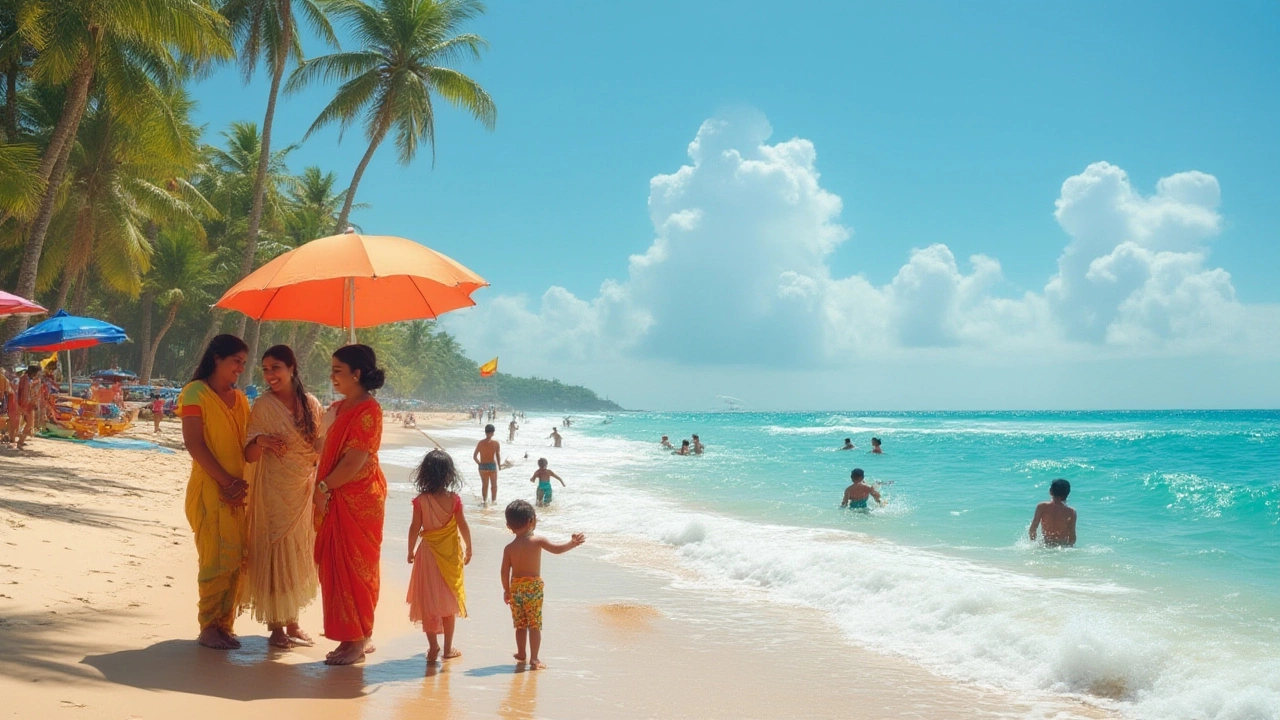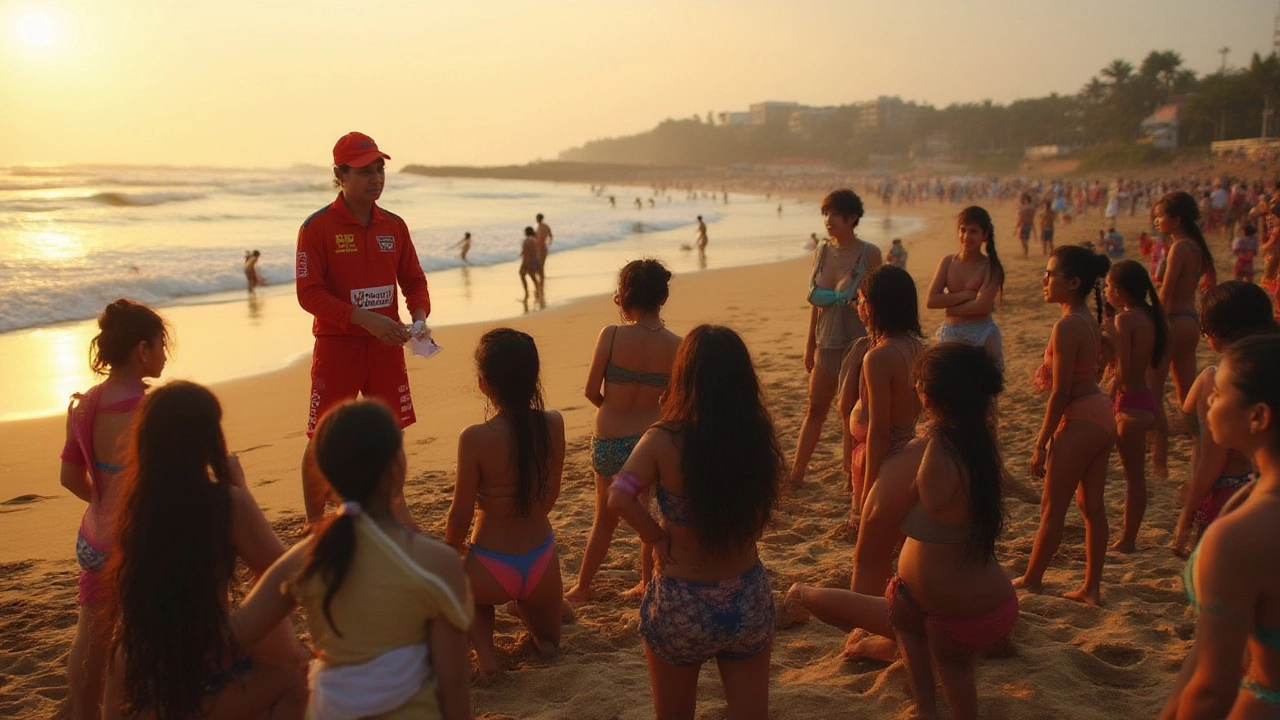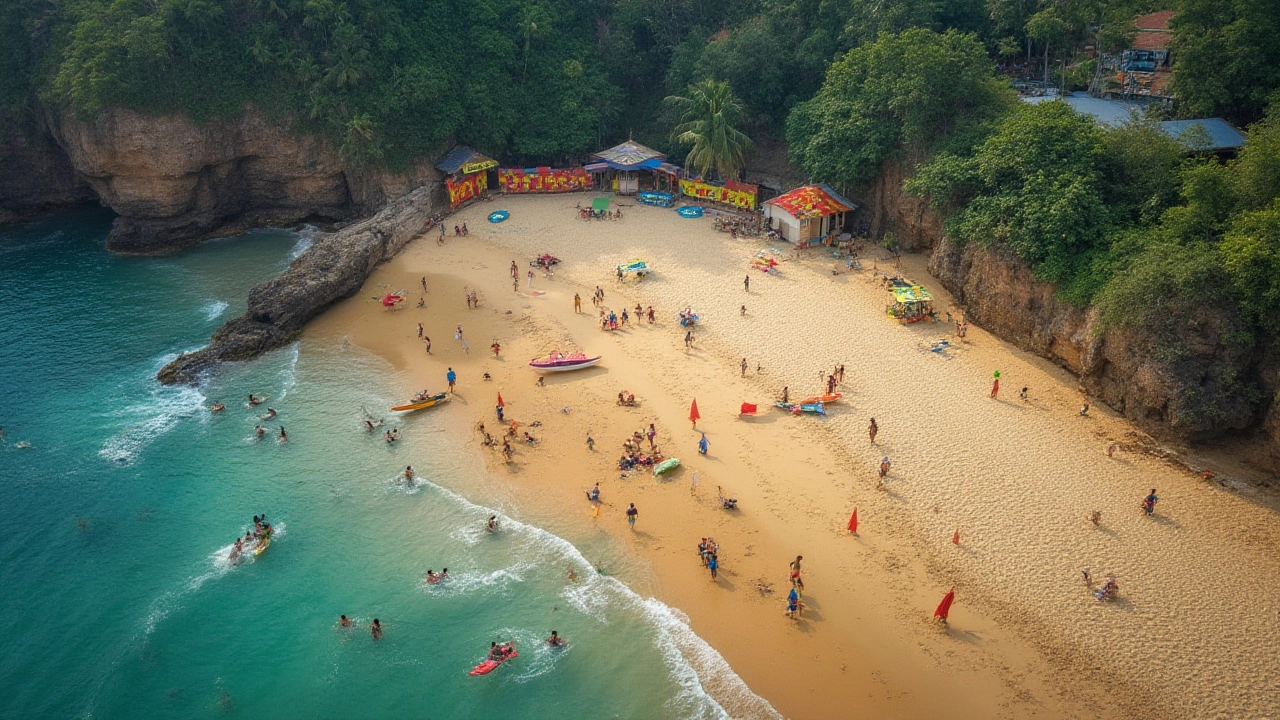Is It Safe to Swim in the Sea in India? Essential Tips & Facts for Beach Travelers
 Jul, 18 2025
Jul, 18 2025
Every year, travelers splash out to the coastlines of India, picturing turquoise waves and palm-shaded sand. But beneath those viral Instagram sunsets, there's a real question: is it truly safe to swim in the sea here? Stories fly around about strong currents, water pollution, and even jellyfish stings. You might spot lifeguards in Goa or whistles on Tamil Nadu’s beaches, but there’s more to know before you dive into the Indian Ocean or the Arabian Sea. If you want to avoid the rookie mistakes and get the actual facts, you’re in the right place because this isn’t just about taking a dip—it’s about coming out smiling, too.
Understanding India’s Coastline and Types of Beaches
India’s coastline stretches for 7,516 kilometers, touching the Arabian Sea, the Bay of Bengal, and the Indian Ocean. You’ll find every kind of beach—golden in Goa, black volcanic sand in Kerala, bustling city beaches in Mumbai, and wild, wind-beaten shores of West Bengal. Each has its quirks and swimming conditions. The west, like Goa and Karnataka, is known for gentle waves during most of the year, while the east coast, such as Odisha and Tamil Nadu, deals with rougher seas and dangerous undercurrents, especially during and after the monsoon.
Beach safety in India doesn’t come with a one-size-fits-all answer. For instance, Radhanagar Beach in the Andamans is often listed among Asia’s cleanest and safest, but farther north in Digha, shifting sands and unpredictable tides can give even strong swimmers a scare. Let’s look at a breakdown of key beach types to wrap your head around the options:
| Region | Typical Waves | Lifeguard Presence | Water Quality | Tourist Readiness |
|---|---|---|---|---|
| Goa | Mild to moderate | High (major beaches) | Generally good | Very high |
| Karnataka | Moderate | Medium | Good | Moderate |
| Kerala | Varied | Medium | Good to polluted | High |
| Odisha/West Bengal | Rough | Low to medium | Variable | Moderate |
| Andaman/Nicobar | Calm to mild | High (tourist hotspots) | Excellent | Medium |
One quirky fact: Some Indian beaches vanish or double in size depending on the tide. For example, Puri Beach in Odisha balloons during low tide, tempting people to walk too far out. Season also matters—a beach calm in December could be roaring with rip currents in July.
The Real Dangers: Currents, Marine Life, and Pollution
First up, let's talk currents. India’s waters are notorious for unpredictable rip currents, particularly on the eastern coastline. Rip currents aren’t easily spotted—they don’t look like big, crashing waves but are more like narrow, fast-moving rivers pulling you away from shore. Data from the National Institute of Ocean Technology (NIOT) shows that rip current incidents cause about one coastal drowning per day during tourist season, especially on India's east coast.
Then there’s pollution. It’s a loaded issue—some urban beaches, like Chennai’s Marina or Mumbai’s Juhu, can see water pollution spike especially after monsoon (thanks to drainage runoff and garbage). A 2023 Central Pollution Control Board report found that around 80 urban beaches failed water quality standards right after heavy rains. If you want a clean swim, stick to lesser-crowded beaches or offset tourist spots in the Andamans, Gokarna, or parts of South Goa where water clarity is noticeably better.
Marine life rarely poses much threat, but there are exceptions. Jellyfish swarms, usually translucent and hard to spot, sometimes appear along Goa and Kerala coasts after the rains. Stings can hurt (imagine a bee sting mixed with sunburn)—local lifeguards usually know the forecast for them. Portuguese Man O’ War, which packs a more serious sting, has made rare appearances in the last few years. Last but not least: snakes and crocodiles. Yes, saltwater crocodiles exist in the Sundarbans (Bengal) and parts of the Andaman Islands. Local warning boards aren’t for decoration—pay attention.

Seasonal Hazards: Monsoon and Weather Patterns
Monsoon in India transforms the sea. Between June and September, the west and east sea coasts get battered with heavy rain, swelling rivers, and sometimes cyclones. You might still see people swimming, but it’s usually not a great idea. Choppy waves, zero-visibility water, and sudden, powerful rips mean even expert swimmers won’t risk it. Lifeguards in Goa and Kerala put up red flags, and local authorities outright ban swimming at risky spots like Baga or Varkala.
The tricky part is the transition seasons. April-May and October-November can flip from calm to wild in a matter of hours due to storm surges or distant cyclonic effects. In 2022, unseasonal cyclones closed beaches in Tamil Nadu and Andaman for weeks, keeping tourists out of the water for safety. Following local news or beach safety apps can help you dodge unpleasant surprises, or just chat up the nearest lifeguard—they know the sea’s mood better than any forecast.
If you’re traveling off the main season, the odds of finding clear water and small crowds improve. Just keep this in mind: a calm-looking sea after rains doesn’t mean it’s safe. Underwater currents can stay fierce for weeks. It’s always safer to swim during daylight and when you see others in the water (especially locals—they’re rarely wrong).
Which Indian Beaches Are Safest for Swimming?
Some Indian beaches have built a reputation for safety, not just in terms of calm water but also good infrastructure, regular patrolling, and clear information for visitors. Here’s a look at the standouts:
- Palolem Beach, South Goa – Gentle slope, clear water, and lifeguards on regular duty. Has visible safety flags and minimal rip currents.
- Radhanagar Beach, Havelock Island (Andamans) – Regularly topping Asia’s ‘best beaches’ lists, the water is crystal clear and monitored by trained lifeguards. Plastic and pollution are minimal thanks to strict rules.
- Kovalam Beach, Kerala – Famous for resort tourism, it’s well-patrolled and has specific swim zones marked with buoys. Avoid the rocky edges, though; stay in flagged areas.
- Agonda Beach, South Goa – Quieter than Palolem but with a reliably safe, shallow surf.
- Tarkarli Beach, Maharashtra – Ideal for families; shallow waters and occasional lifeguard patrols, especially on weekends.
Some tourist favorites like Baga and Calangute in Goa attract huge crowds and can be fun for a dip, but accidents spike here during the full tourist rush and if folks ignore red flags. Always check with local resorts or authorities: some spots have daily updates on water conditions and safe zones. And don’t blindly trust the calm. Even a favorite like Auroville Beach near Pondicherry sometimes reports rip currents—there are warning signs for a reason.

Safety Tips and What Locals Wish You Knew
Swimming in India isn’t rocket science, but there’s stuff most travel brochures don’t tell you. Locals are usually happy to see tourists have fun but get frustrated because many visitors ignore safety flags or overestimate their swimming skills. Here’s what actually helps:
- Always swim with a buddy—never alone. Rescue responses are quicker when someone’s watching you.
- Obey lifeguard instructions and flag systems. Red means danger, yellow means caution, green is good (but never let your guard down).
- Don’t drink and swim—alcohol-related drownings are sadly common, especially at party beaches in Goa.
- If you get caught in a rip current, don’t fight it. Swim parallel to the shore until you break free, then head in.
- If you see a warning about jellyfish, don’t ignore it. Ask for a local vinegar station or what to do if stung—it’s almost always manageable if treated right away.
- Leave valuables onshore. Bags get stolen in seconds by beachside thieves pretending to be vendors or tourists.
- Watch for low tide—exposed rocks and sudden drop-offs appear fast. Check the posted tide times if you’re not sure.
- If the water looks brown, smells off, or you see floating trash, skip the swim. This usually means pollution or sewage runoff, especially after the first monsoon rains.
Most incidents involving tourists are 100% preventable. Beach safety isn’t about being paranoid—it’s about reading the beach like locals do. If you’re unsure, just ask someone who lives there, or look for the crowd; Indians rarely swim in dangerous conditions and they don’t fake confidence in rough seas.
That being said, plenty of people swim safely and have an incredible time on Indian beaches. Pick your spot, respect the sea, and you’re set for a great story, not a cautionary tale. When the sea offers that perfect, cool escape from the tropical heat, knowing this stuff will help you enjoy it without worry. Everyone loves a good swim—but everyone loves a safer one even more, right?